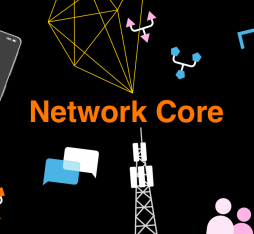The work on 5G is an opportunity to improve how the needs of vertical domains are integrated and to take these communities into account within the 3GPP groups.
The role of the 3GPP is to define a comprehensive radiocommunications system, which includes radio technologies, terminals, core network and services. A vast and complex mission, which is the foundation of one of the defining features of the organisation: while it groups together members from different standardisation bodies, it does not itself produce standards.
Specifications before standardisation
The 3GPP is an engineering organisation tasked with producing and publishing technical specifications on mobile networks. These specifications then become standards issued by the standardisation bodies that make up the 3GPP and are referred to as “Organisational Partners”. This work covers all aspects of the mobile networks and is structured around three central groups called Technical Specification Groups (TSG), which are then further broken down into specific working groups (WG). On 18 March 2019, Lionel Morand, Network Architect at Orange and Group delegate for the IETF and 3GPP for more than 15 years, was elected Chair of the Core Network & Terminals (CT) TSG.
True technical expertise
The essential task of the CT TSG is to produce the specifications relating to interfaces between terminals and networks, terminal capacities and the core part of the network of 3GPP systems, in particular for future 5G networks. Appointing Lionel Morand is a significant development for the 3GPP. This is the first time that a mobile operator has been appointed to be the leader of the CT TSG and thereby recognises Orange’s historical commitment to the organisation.
While the primary purpose of the TSG, and particularly the 4 WGs of which it consists, lies in the technical aspects – preparing, designing and developing the specifications – its work of course involves a significant amount of supervisory duties. The TSG’s quarterly plenary meetings are an opportunity to review the work of the WGs and, where necessary, provide the appropriate arbitration in order to reach a consensus until the specifications and contributions are validated. This is an exercise that sometimes requires discretion in order to bring together voices from companies with different profiles, cultures, motivations and interests, and whose responsibility lies with Lionel Morand, the new leader of the CT TSG. It is all the more delicate because a plenary session can bring together more than one hundred delegates and hundreds of technical documents are reviewed.
It is also during these plenary sessions that the strategic and political guidelines are set for the future plans for the networks, in conjunction and in line with the other two TSGs.
Release upon release – 5G is in the works
The 3GPP is forging ahead with a series of “releases”, which incorporate a set of features and specifications and provide a benchmark for how the work of the association is progressing. “We decide in advance whether the content in a forthcoming release will be modest or more ambitious,” notes Lionel Morand. “In recent years, we have started to take a more dynamic approach, tackling several ongoing issues at the same time, as is the case with 5G. Sometimes this even means adjusting or postponing the implementation of certain features, for instance, when taking into account certain specific needs of vertical domains (Industry, Health, Banking, etc.). We are currently working on Release 16 and are also reviewing and prioritising the content for Release 17.”
To recap, the latest release (Release 15) marked a major milestone in the development of the next generation of mobile network technologies, with the introduction of standalone specifications using a 5G core network structure.
Vertical integration – a major challenge for 5G
By using the concept of “network slicing” to its full potential, 5G marks the arrival of native and multiservice networks, which are able to meet the needs of various vertical domains. The 3GPP, which is building on its expertise and recent work in developing the protocols to support essential and critical services necessary for public security services (“Mission Critical Services”), must take into account a growing number of these vertical domains. “We are working to improve how their needs are integrated into our work by thinking specifically about how our working methods are changing and to be more agile while also maintaining stability in the system. This then means, for instance, appointing 3GPP ambassadors and informal groups representing these external players to facilitate information exchange and to share expertise between these communities.”
These are all challenges that Lionel Morand has been addressing in recent months as the new leader of the CT TSG: “The transition between the WG and TSG levels is significant as it requires a move away from the technical aspects to be involved in managing the project at a higher level. We also feel more pressure when finalising and delivering these releases – it is both challenging and highly motivating!”











